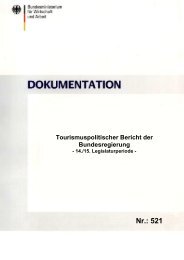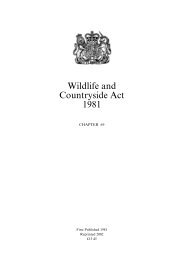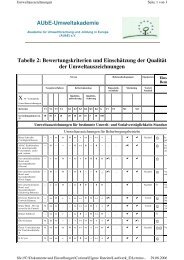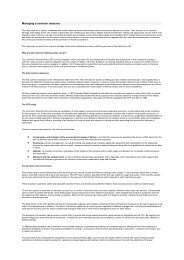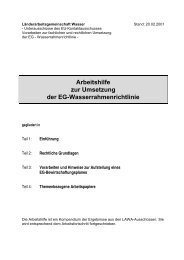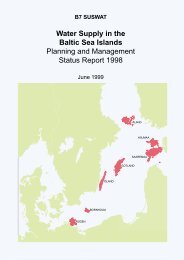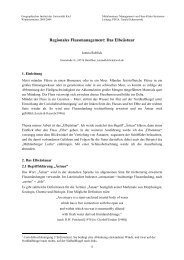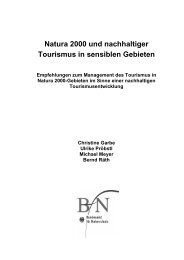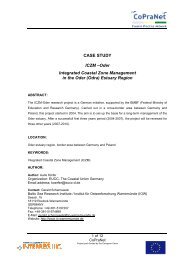View - IKZM-D Lernen
View - IKZM-D Lernen
View - IKZM-D Lernen
You also want an ePaper? Increase the reach of your titles
YUMPU automatically turns print PDFs into web optimized ePapers that Google loves.
Haas & Peekna & Walker Folklore 23<br />
occurs in the “earth diver” myth common in the Arctic (Honko et<br />
al.1994: 83), among the Ob-Ugrians of the Boreal zone (Lintrop 1997:<br />
20–22), and among the Native Americans whose ancestors passed<br />
through a periglacial environment. Such myths about a bird that<br />
builds up a land form with mud from the bottom of the sea are<br />
likewise relatively naturalistic accounts that fit the images that<br />
ancient eyewitnesses would have seen when periglacial lakes in<br />
Eurasia and North America suddenly drained.<br />
The most plausible alternative explanation for such creation-myths<br />
would be isostatic rebound, the gradual rising of the land that continues<br />
long after a glacier has melted. As a result of historical maps<br />
and documents, today’s residents along the Baltic shore are aware<br />
that the land is gradually rising. Old seaside castles and towers in<br />
Tallinn and Kuressaare, for example, are now at quite a distance<br />
from the shore. But the rate at which the land is rising is so slow (2<br />
mm a year, according to Tiirmaa 1995: 21) that it would be difficult<br />
to notice without written records going back centuries. In ancient<br />
times, preliterate people with sharp minds, long memories, and old<br />
relatives might have been able to discern a slight, gradual rise in<br />
the land along the shore, but it would not be any more amazing<br />
than the movement of sand dunes pushed by the wind – not the<br />
kind of attention-grabbing event that would inspire composition of<br />
songs and stories.<br />
THE CRASH OF THE SUN<br />
The Kaali meteorite crash is the kind of unique and astounding<br />
event that must have become a topic of storytelling and singing for<br />
many generations afterward. As mentioned above, it evidently occurred<br />
around 2000 BC, on Saaremaa Island in the Baltic Sea. As<br />
recent scientific studies have established (Tiirmaa 1994), a meteorite<br />
of iron streaked from east to west over the Estonian mainland,<br />
broke apart as a result of atmospheric friction, and hit the island in<br />
at least 9 places, leaving craters that can be seen to this day. Tiirmaa<br />
(1994: 63) likens the event to a small nuclear explosion (minus radioactivity).<br />
The calculations reported in Tiirmaa and our own estimate,<br />
based on the size of the crater and the hardness of the dolomite<br />
crust, lead to the conclusion that the amount of energy needed<br />
to form the main crater was equivalent to 1-4 kilotons (1–4 million<br />
www.folklore.ee/folklore/vol23<br />
56



